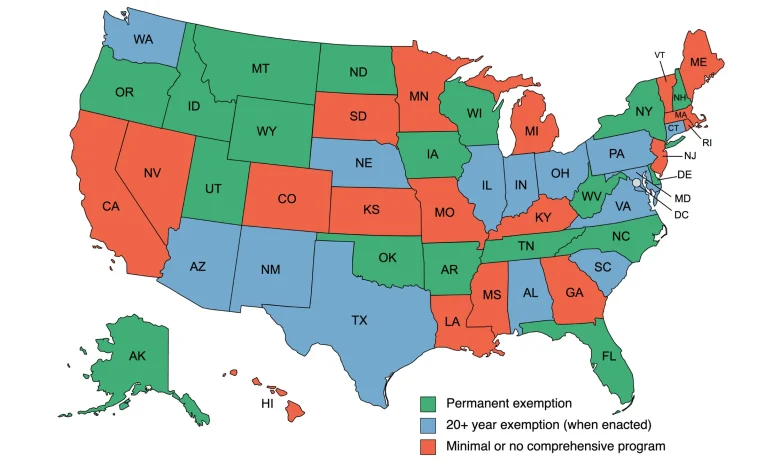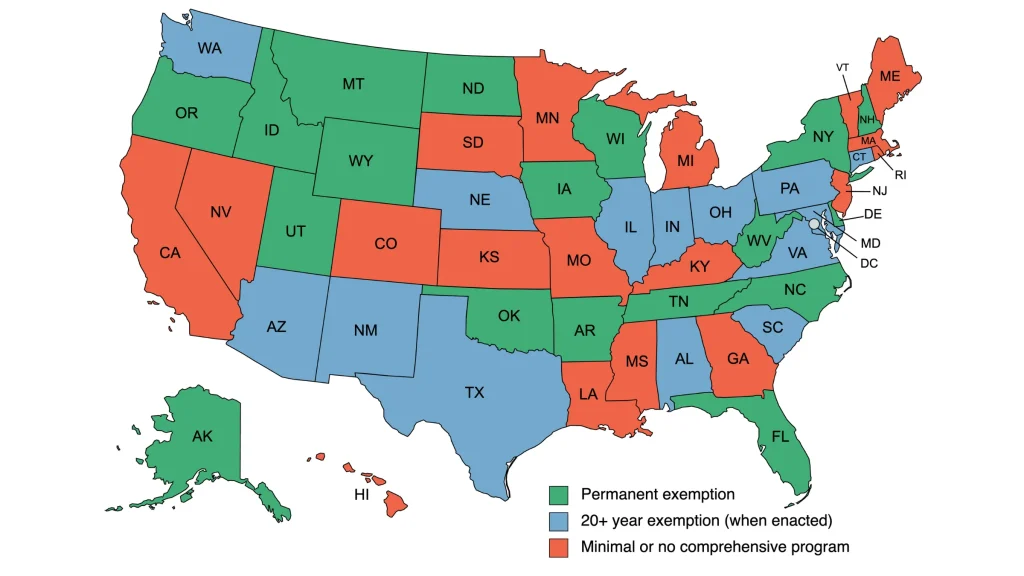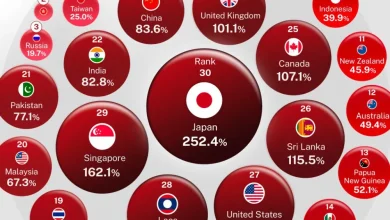Top 5 States for Data Center Electricity Consumption

Data Center Electricity Consumption By State
Electricity consumption in the US is being driven primarily by data centers, whose energy requirements are predicted to increase dramatically. In 2023, data centers accounted for approximately 4% of the nation’s electricity use, a figure projected to more than double by 2030 due to the rising demand for artificial intelligence (AI) and cloud computing technologies.
Due in significant part to its well-established infrastructure and “Data Center Alley” in Loudoun County, Virginia leads the nation in data center energy usage, with over 33 million megawatt-hours consumed yearly. Large data center activities are located in Texas, California, Illinois, and Oregon, among other high-consumption states. Energy systems face hurdles as a result of this rapid growth, especially in reaching sustainable energy goals while handling rising demand.Observer
1. Virginia’s Data Centers Drive Power Surge
With its “Data Center Alley” in Loudoun County acting as a global center for digital infrastructure, Virginia is leading the U.S. data center market. The state uses more than 33 million megawatt-hours of electricity per year for data centers, more than any other state in the country.
Artificial intelligence (AI), cloud computing, and the growing dependence on digital services are driving this demand. Although these facilities have a major positive economic impact, there are drawbacks as well, including as increased strain on the electrical system and environmental issues. In order to manage this power surge sustainably, efforts must be made to integrate renewable energy.

2. data center electricity consumption per day
The top five states in the US where data centers use the most electricity each day are as follows:
- Virginia: Leads the US in data center density, especially in Northern Virginia, where its infrastructure handles more than 70% of all internet traffic worldwide.
- Texas: Due to its abundant land supply and comparatively lower electricity costs, this state has seen a large growth in data center building.
- Despite being limited by greater energy costs than other states, California is a digital hotspot that is home to many data centers.
- Illinois: Attracts significant data center investment because of its advantageous location and strong power grid.
- Oregon: Energy-efficient data centers want to locate in Oregon due to its milder environment and availability of renewable energy.
3. Which state has highest consumption of electricity?
Texas holds the distinction of being the state with the highest electricity consumption in the United States. This is driven by its substantial population, extensive industrial operations, and the presence of energy-intensive sectors like oil and gas production, manufacturing, and agriculture. The hot climate contributes significantly to energy demands for air conditioning. Furthermore, the state’s position as a leading energy hub, hosting numerous data centers and industrial facilities, amplifies its power usage. Texas exemplifies a balance between energy production and significant electricity needs.
conclusion
the top states for data center electricity consumption—Virginia, Texas, California, Oregon, and Georgia—highlight the critical role of infrastructure and energy resources in supporting technological growth. Virginia’s dominance stems from its extensive data center network in “Data Center Alley,” while Texas and California benefit from their industrial strength and innovation hubs. Oregon and Georgia leverage strategic locations and renewable energy sources. As data demands continue to rise, these states exemplify how energy and technology intersect to drive economic and digital development.
faqs:
1. Which states consume the most electricity due to data centers?
Virginia, Texas, California, Oregon, and Georgia are the states consuming the most electricity due to data centers. These states host significant numbers of data centers, driven by their advanced infrastructure, availability of energy resources, and proximity to key technology hubs. Virginia leads, particularly with its “Data Center Alley,” while Texas and California follow due to their large-scale industrial and technological developments. Oregon and Georgia also play major roles, benefiting from strategic locations and renewable energy integration.
2. Why does Virginia lead in data center power usage?
Virginia’s dominance in data center power usage is primarily due to its strategic location, robust infrastructure, and favorable business climate. Its proximity to major tech hubs, abundant fiber optic connectivity, reliable power supply, and supportive government policies have made it a prime destination for data center operators. Additionally, the region’s moderate climate reduces cooling costs, further enhancing its appeal. These factors have collectively contributed to Virginia’s position as a leading state for data center power consumption.
3. How do data centers impact a state’s energy grid?
Data centers significantly impact a state’s energy grid by increasing electricity demand, especially due to their 24/7 operations and cooling needs. This surge in energy consumption can strain local grids, requiring enhanced infrastructure and reliable power sources. States hosting large data center hubs must balance this demand with sustainable energy solutions, often incorporating renewable sources to meet both environmental goals and growing tech industry needs.
4. What factors drive high data center power consumption?
High data center power consumption is driven by several factors, including the energy-intensive nature of computing equipment, the need for robust cooling systems to maintain optimal operating temperatures, and the increasing demand for data processing and storage. Additionally, the growth of cloud computing and artificial intelligence has further fueled data center power consumption as these technologies require significant computational resources.



